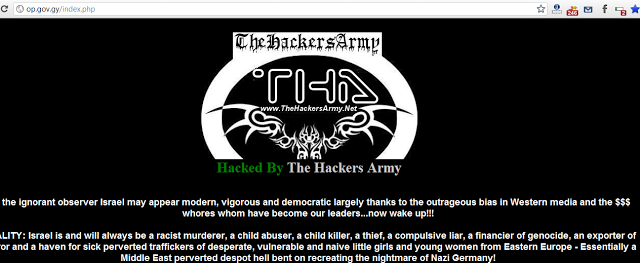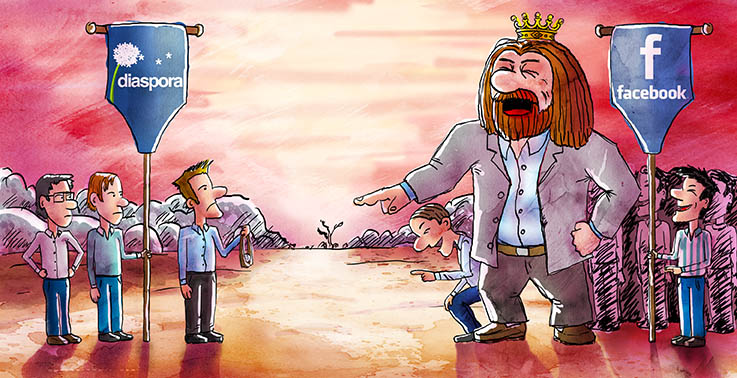Familiar political tools like petitions, fundraisers, mass letter-writing, call-in campaigns now have online equivalents. But what about protest tactics like street marches, picket lines, sit-ins and occupations? Where is the room on the internet for civil disobedience?
In the offline United States, civil disobedience is widely respected as a valid form of political activism. It also has a widely recognised form. Indelible images of Rosa Parks, lunch counter sit-ins, and street marches from the 1950s and ’60s civil rights era established what civil disobedience looked like. Civil disobedience looked like an embattled minority bravely standing up in face of clear injustice. It looked like people taking a stand with their bodies and their identities, and often getting arrested.
This pattern of public, performative defiance of injustice, followed by arrest, has become part of the recognised script for political activism in the United States. It’s how we expect activism to happen: on the streets, in public, where everyone can see your face. Adhering to a recognised script is essential to political activism that is reliant on the attention of the media to be effective.
But today, civil disobedience often looks very different. Networked technologies mean our opportunities for effective political activism have increased exponentially. Where activists once put their physical bodies on the line to fight for their causes, online activists can engage in digitally based acts of civl disobedience from their keyboards. There are three major lines along which digitally based civil disobedience is developing: disruption, information distribution, and infrastructure. Each has its own particular challenges and benefits.
Disruption
Disruptive tactics like distributed denial of service (DDOS) actions and website defacements have a fairly long history in internet terms. Activists groups like the Electronic Disturbance theatre, the Strano Network, pro-Palestinian groups, and many others used DDOS and website defacements in their campaigns as early as the mid-1990s. These tactics aim to upset the status quo by disrupting the normal flow of information, thereby attracting attention to their cause and message.

Disruptive tactics are focused on the public: they aim to deliver their message to as many people as possible, either through exposing them to the disruption and dissent, recruiting them to take part, or both. To be effective, this type of civil disobedience needs to attract the attention of masses of people, typically through the mainstream media. If the media doesn’t recognise or cover the actions as acts of protest, then the activist message will fall flat. (If an activist defaces a corporate website, and no one sees it, does it have political impact? Probably not.)
Information Distribution
Information distribution-based tactics are built around the acquisition and release of hidden or secret informatin. In the past three years, we’ve seen this kind of protest take the form of whistleblowing, information exfiltration, doxxing (posting the names and personal information of targets online), and crowd-sourced vigilante investigations. These tactics are used by groups like Wikileaks and Anonymous. The idea is to move information from states of low visibility to high visibility, putting injustices in the public eye when traditional law enforcement avenues seem to have failed.
Anonymous has been developing crowd-sourced vigilante investigations in the US and Canada with Steubenville, #JusticeforReteah, and other ops. “Human flesh search” message boards are already popular in China, giving netizens the chance to bring formerly untouchable corrupt officials to justice. The FindtheBostonBombers subreddit was a home-grown example of this kind of crowd-sourced vigilante investigation. The goal of this class of tactics is to empower people to take action by adding to the information landscape.
Whistleblowers and leakers rely on the cooperation of the mainstream media to publicize, contextualize, and analyse the information they release. However, this may become easier as more news organisation recognise open paths for whistleblowers and leakers. Wikileaks’ five media partners for the Cablegate documents, the New Yorker‘s Strongbox program, and the Guardian‘s extensive work with NSA whistleblower Edward Snowden are all examples of how cooperation between whistleblowers and news organisations is growing.
Infrastructure
Infrastructure-based activism involves the creation of alternate systems to replace those that have been compromised by state or corporate information-gathering schemes. In other words, if the government is snooping on the internet, activists build a tool to make it harder for them to see everything. Tor, Diaspora, and indenti.ca are some examples of these projects, as are the guerrilla VPNs and network connections that often spring up to serve embattled areas, provided by activists in other countries.
Similar to living off the grid, these projects provide people with options beyond the default. Open source or FLOSS software and Creative Commons use a similar tactic: when the system stops working, create a new system. The challenge is to bring these new systems into widespread use without allowing them to be compromised, either politically or technically. However, these new systems often have to fight network effects as they struggle to attract users away from dominant systems. Diaspora faced this issue with Facebook. Without being able to disrupt dominant systems, user migration is often slow and piecemeal, lacking the impact activists hope for.

Illustration: Osmont2
Disruption, information distribution, and infrastructure tactics and strategies are often practiced by separate groups working independently on different issues. Sometimes disparate group interests will overlap, as when Anonymous launched the disruptive Operation Payback in support of Wikileaks during Cablegate, but there is little inter-group organisation.
As the practice of civil disobedience develops online, those who favour different styles of activism but who are united in a common cause may begin organising themselves into affinity group-style coalitions, building alliances for more effective activism. Effective digitally-based civil disobedience needs a diverse, integrated repertoire of contention to draw from. A disruptive action targeting Facebook could drive users towards alternate, more open, social networking services. A leak detailing government intelligence abuses could spur disruptive protests, consumer flight to uncompromised services or further leaks.
On the street, activists at major events like political conventions or meetings of groups like the WTO or G8 often use a variety of tactics to provide support within affinity groups, and to make it harder for protest to be neutralized by law enforcement. Street marches are counter balanced by occupations and lock-ins. Posters and pamphlets will be augmented by street art, puppets, and ad hoc street theatre. Jail solidarity actions are helped by speeches on the courthouse steps. Although one action may get shut down, others can still make an impact. Digital activists will want to emulate this coalition-building in online spaces too.
As digital activism develops, civil disobedience will continue to a be vital tool for expressing dissent. The internet could be the tomorrow’s best zone for free speech and activism, a place where protesters can challenge structures of power that threaten human rights and freedoms. The future of digital civil disobedience will grow out of new online tactics, augmented by the internet’s ability to bring people together across geographical boundaries.

Protest in the information age may not look exactly like Rosa Parks on that bus half a century ago. But it will still carry on our ongoing struggle to change the world for the better, and to bring justice to the oppressed.
Molly Sauter just finished her masters in Comparative Media Studies at MIT, and will soon be moving to Montreal to start her PhD in Communication Studies at McGill. She can be found tweeting @oddletters and blogging at oddletters.com
